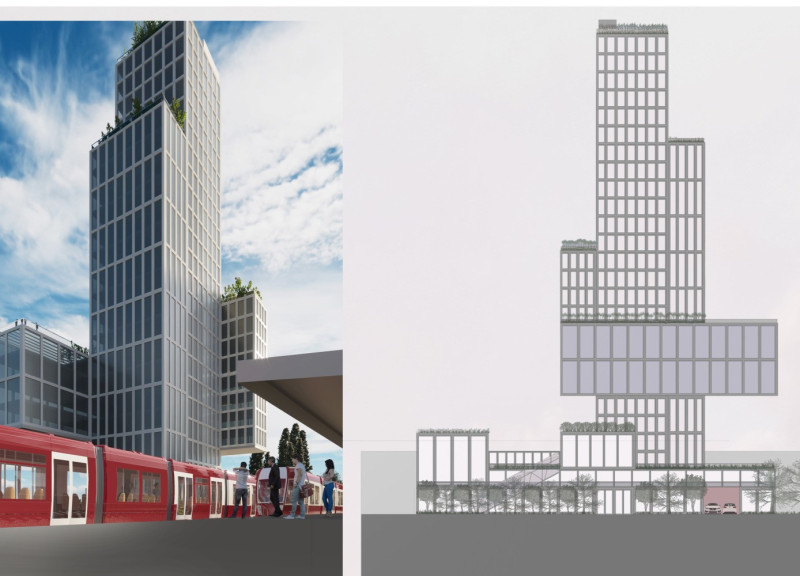5 key facts about this project
The Divergent Essen Tower, located at Essen Hauptbahnhof in Germany, stands out as a contemporary addition to the urban landscape. The project is designed to minimize carbon emissions while improving connections in a busy railway area. The concept features a balance of vertical and horizontal elements, making a distinct statement in the city.
Design Concept
The tower consists of a vertical component complemented by horizontal sections. This design creates a lively contrast to the older buildings in the vicinity, which are darker and more traditional in appearance. The upward stacking of blocks not only represents a modern architectural style but also signifies a shift in the cultural narrative of the area.
Ground-Level Interaction
The focus on pedestrian movement is an important aspect of the design. The structure is laid out to guide visitors, with an escalator system providing access from the Essen railway to public areas, including lounges and waiting spaces. This organization aims to create a welcoming atmosphere that encourages social interaction and easy navigation through different areas of the building.
Façade Design
The façade is inspired by contemporary artistic principles, particularly influenced by the works of Marianna Copello. It features simple geometric shapes and designated openings that add layers of depth and prevent a monotonous appearance. This approach ties the visual aspects of the building to its functional use, making it suitable for both art and architecture.
Sustainability Focus
While specific materials are not mentioned, the design emphasizes sustainable building practices. Attention to lowering the carbon footprint is part of the project’s core values. These principles are closely integrated with the overall vision, contributing to a solid building concept that respects the environment and its surroundings.
The tower rises gracefully, with lighter elements at the upper levels that create an impression of reaching toward the sky, promoting a feeling of openness and upward movement in the design.



















































